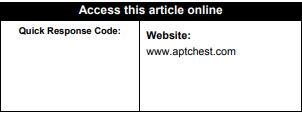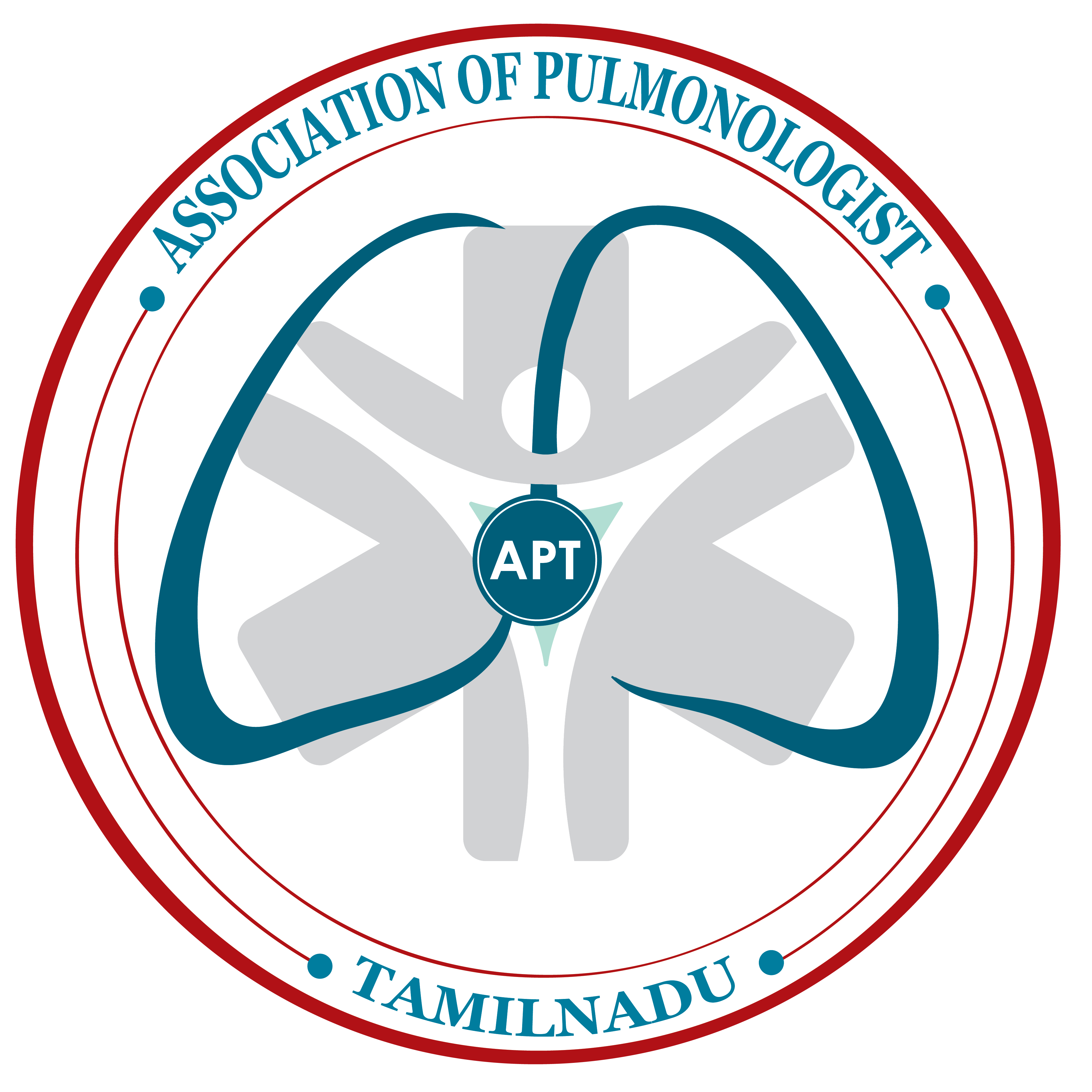Ajay Narasimhan et al.: Post-Partum Presentation of Ruptured Bronchogenic Cyst
Post-Partum Presentation of Ruptured Bronchogenic Cyst
Ajay Narasimhan, K.Anbananthan,Jayagovardhanan Govindasamy Dayalu, Dinesh Shanmugasundaram, Arvind Venkatasamy
Institute of Cardiothoracic Surgery, Rajiv Gandhi Government General Hospital, Madras Medical College,
Chennai, Tamil Nadu, India
Abstract
Mediastinal cysts account for 20% of all mediastinal masses. A 22-year-old pregnant female was admitted for delivery. She developed dyspnea on the 3rd day of delivery. Chest X-ray revealed a large right hydropneumothorax and tube thoracostomy was done. She was referred to us for further management. We decided to operate. At surgery, a ruptured cystic lesion was seen in the posterior mediastinum separate from all three lobes. It was communicating with the bronchus. The cyst was excised completely and bronchial communication was sutured. The lung expanded completely. Post operative period was uneventful.
Histopathology revealed it to be a bronchogenic cyst.
Corresponding Author: Dr. Ajay Narasimhan M.Ch, Assistant Professor, Institute of Cardiothoracic Surgery, Madras Medical College, EVR Periyar Salai, Chennai – 600003, Ph : +91 9940137747
How to cite this article: Ajay Narasimhan, Jayagovardhanan Govindasamy Dayalu, Dinesh Shanmugasundaram, Arvind Venkatasamy, Post-Partum Presentation of Ruptured Bronchogenic Cyst, JAPT 2019; 2(3):117-119
Introduction
Mediastinal masses are uncommon conditions that pose a diagnostic and therapeutic challenge to thoracic surgeons. Mediastinal cysts account for 20% of all such cases. A variety of names have been attributed to mediastinal cysts such as bronchogenic, bronchoesophageal, enterogenous,esophageal, duplication cysts. Fallon and associates in 1954 utilised the cysts embryological origin and anatomical location to classify these lesions. Most of the mediastinal cysts are congenital in origin and embryologic development is an important factor in classification.1

Case report
A 22 year old female was admitted at term for delivery. She had a vaginal delivery which was uneventful. She delivered a healthy female baby. She was due to be discharged from the hospital on the 3rd day when she developed breathlessness. A Chest X-ray was taken which showed right sided hydropneumothorax for which tube thoracostomy was done.
She drained around 1.5 litres of purulent looking fluid and had massive air leak. She was then referred to our department for further management. Her blood investigations were within normal limits. We ordered for a computerised tomography of the chest.


It showed a large cystic lesion within the right lower lobe of the lung with an air fluid level and intercostal tube in situ. Bronchoscopy was unremarkable. At this stage we had a differential diagnosis of a ruptured lung abscess, lung cyst or a hydropneumothorax. In view of persistent drainage and air leak, we decided to go ahead with surgery. We informed the patient that she might need a right lower lobectomy.
After pre anaesthetic evaluation, she was taken up for surgery. Under general anaesthesia with a double lumen endotracheal tube, a posterolateral thoracotomy was done. Around 800 ml of mucoid fluid was aspirated. A cystic lesion was found to be separate from all the three lobes and communicating with the right bronchus intermedius.

The cystic lesion was removed completely and the bronchial opening was closed using 3-0 polygalactone sutures. The lung expanded completely.

The patient was extubated on table. Breast feeding was restarted on the second post operative day. The intercostal tube was removed on the 4th Post operative day. She was discharged on the 6th post operative day. The specimen was sent for histopathology. Histopathology revealed it to be a bronchogenic cyst.
Discussion
Bronchogenic cysts result from abnormal budding of the tracheal diverticulum between third and sixth week of gestation. They are usually found in close proximity to the tracheobronchial tree but they may also be found in the posterior mediastinum or intra parenchymally. On computerised tomography bronchogenic cysts appear as well defined masses with homogenous density similar to water. If there is a direct communication with the tracheobronchial tree
there may be air fluid levels seen.
Bronchogenic cysts count for 15-20% of all mediastinal cystic lesions. Several studies have shown that bronchogenic cysts are the most frequently occurring cysts in the mediastinum.
Bronchogenic cysts are more common in men and more often seen on the right side. Around 20-30% of cysts are asymptomatic but majority of them present with symptoms. In a series by Cartmill and Hughes almost 75% of patients were symptomatic.2
Substernal pain might be the most common presentation for a mediastinal bronchogenic cyst. Pain is secondary to compression of adjacent structures or due to infection. Symptoms of compression depend on the structure being compressed.
Bronchogenic cysts may become symptomatic secondary to infection. The infection is presumed to be due to the cyst communicating with the bronchial tree. Infected bronchogenic cysts may cause fatigue, chest pain, and fever. If the communication with the bronchus is large enough,patients may cough up cyst debris. Empyema or hemothorax may occur if an infected cyst ruptures into the pleural space.
Our patient presented with a ruptured bronchogenic cyst into the pleural space. We believe the rupture might be secondary to increased intra abdominal pressure during delivery although there is no evidence to support this claim. We decided to present this case because of the time of presentation in the post partum period. There are no other reported cases of ruptured bronchogenic cysts in the post partum period. The patient remains well till the current follow up.
References
- Pearson, F. and Patterson, G. (2008). Pearson’s thoracic & esophageal surgery. Philadelphia: Churchill Livingstone/Elsevier, pp.1581-1588.
- Cartmill JA, Hughes CF. Bronchogenic Cysts: a Persistent Dilemma. Aust N Z J Surg. 1989;59(3):253–6.





